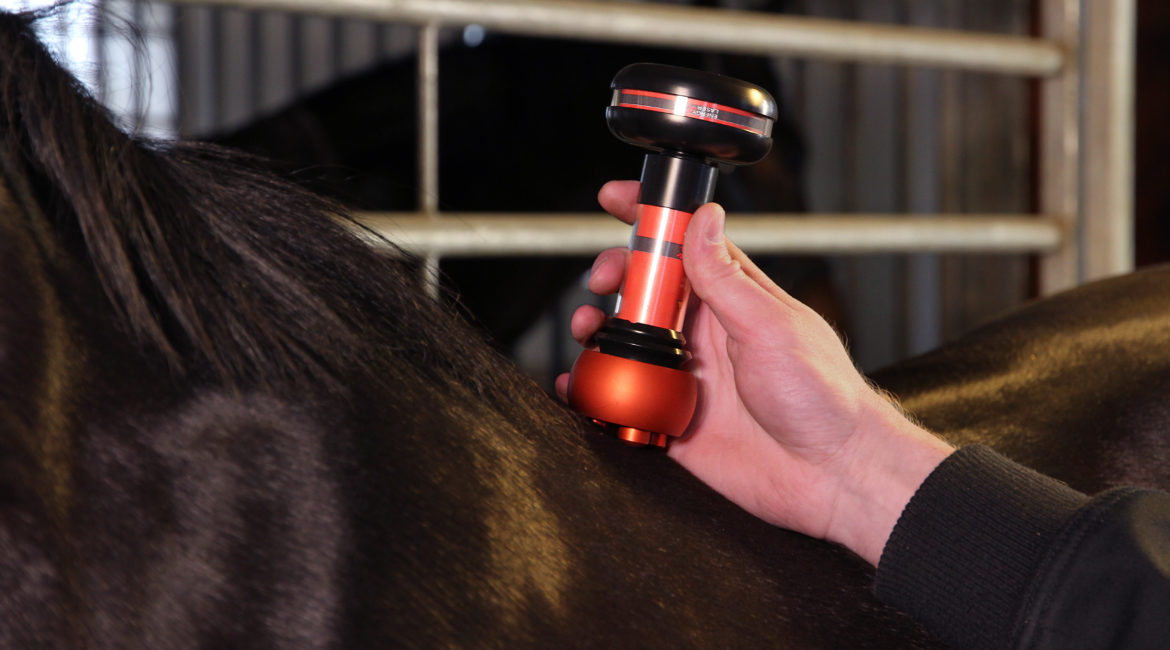Discover the Fantastic Benefits of Equine Therapy for Emotional Healing
Discover the Fantastic Benefits of Equine Therapy for Emotional Healing
Blog Article
How Laser Therapy in Horse Treatment Is Reinventing Vet Care for Equines
Laser treatment has actually arised as a transformative technique in equine vet treatment, giving a non-invasive solution that expedites healing and enhances total health. The mobility and flexibility of laser therapy devices even more underscore their growing necessity amongst veterinarians.

Comprehending Laser Therapy
Understanding laser treatment is essential for valuing its function in equine treatment. Laser treatment, likewise referred to as photobiomodulation, includes the application of certain wavelengths of light to tissues, which can cause different biological results. This healing technique takes advantage of the power of light energy to penetrate the skin and underlying cells, stimulating mobile processes and enhancing cells fixing.
The technology behind laser therapy is based in the concept of photochemistry, where photons are soaked up by chromophores within cells, bring about increased ATP production and modulation of reactive oxygen species. This, in turn, advertises mobile expansion, reduces swelling, and accelerates recovery. Veterinary specialists utilize different sorts of lasers, including low-level lasers (LLLT) and high-power Course IV lasers, depending upon the details restorative objectives and the nature of the equine problem being dealt with.
Different laser wavelengths and power setups are carefully chosen to target various tissue midsts and attain preferred professional results. Safety and security protocols are extremely important, as inappropriate usage can bring about thermal damage or suboptimal restorative results. Thus, a detailed understanding of laser treatment's mechanisms and applications is vital for its effective application in equine veterinary technique.
Benefits for Horse Health
The myriad advantages of laser treatment for equine health encompass improved recovery, discomfort reduction, and enhanced flexibility. This advanced treatment technique leverages certain wavelengths of light to pass through tissues, promoting mobile feature and advertising rapid tissue repair work. The non-invasive nature of laser therapy ensures marginal tension and discomfort for the horse, facilitating a smoother recovery process.

By reducing inflammation and discomfort, and enhancing cells repair, laser treatment assists in restoring joint feature and muscle versatility. Hence, laser therapy stands as a transformative device in modern-day equine vet treatment.
Common Problems Dealt With
Laser therapy has arised as a functional therapy alternative for a variety of common equine conditions. Furthermore, laser treatment is efficient for problems like osteoarthritis, where it helps reduce joint inflammation and promote tissue repair service.
Wound administration is another area where laser therapy has shown considerable pledge. Chronic wounds or slow-healing ulcers can be especially difficult in equines, however laser therapy improves cellular regeneration and improves blood flow, hence expediting the recovery procedure. Laser treatments have been successfully used in taking care of unguis conditions such as laminitis and abscesses, reducing discomfort and advertising much faster healing.
Equine athletes usually deal with performance-related problems like muscle mass soreness and stress cracks. Laser therapy aids in lowering muscle mass tiredness and expedites the recuperation of micro-injuries, hence making sure that horses go back to peak performance faster. By addressing these varied conditions, laser treatment is transforming the landscape of vet care, providing a non-invasive, reliable alternative to conventional therapies.
Innovation Behind Laser Treatment

Laser tools utilized in vet medication frequently use low-level laser treatment (LLLT) or cold laser therapy. Unlike high-powered surgical lasers, these tools operate at lower power degrees, maximizing therapeutic benefits while lessening thermal damages. The power from the laser light boosts adenosine triphosphate (ATP) manufacturing, enhances cellular metabolic process, and speeds up cells fixing processes.
Modern find here laser therapy equipment for equine therapy is made with adjustable settings to provide to the specific demands of various tissues and conditions. Additionally, innovations in laser technology have actually led to the advancement of portable, handheld tools, making it much easier for veterinarians to provide treatment in a range of settings, from facilities to stables.
Success Stories and Study
Showcasing the tangible advantages of laser therapy, many success tales and case researches brighten its transformative impact on equine wellness. One such situation involves a purebred racehorse struggling with chronic tendonitis. Conventional therapies yielded marginal renovation, however after incorporating laser therapy into the program, the horse showed significant decreases in inflammation and discomfort within weeks, eventually going back to competitive auto racing.
One more engaging instance features a dressage equine diagnosed with serious back discomfort, limiting its performance. A veterinary team used low-level laser treatment (LLLT) to target the irritated locations, causing marked enhancement in versatility and a noteworthy decline in discomfort. Over a number of sessions, the equine restored its peak form, showcasing the efficiency of laser treatment in resolving musculoskeletal issues.
In addition, a study carried out at a leading equine clinic examined 50 equines with various soft cells injuries treated with laser therapy. The results were striking: 85% of the equines demonstrated sped up healing times and boosted flexibility. These instances emphasize the adaptability and performance of laser therapy in equine medication, supplying a non-invasive, scientifically-backed approach to improving recovery and performance in horses.
Conclusion
Laser treatment is changing equine veterinary care by providing a non-invasive treatment that speeds up recovery, reduces see this inflammation, and eases pain. With its performance in treating a series of problems, from bone and joint injuries to chronic ailments like osteoarthritis, this innovation dramatically boosts equine health and wellness and movement. The portability and versatility of laser treatment even more highlight its transformative effect on veterinary techniques, solidifying its duty as a necessary tool in contemporary equine healthcare.
Report this page